PRODUCT DEVELOPMENT - REVERSE ENGINEERING - ANALYSIS - OPTIMIZATION
PRODUCT DEVELOPMENT - REVERSE ENGINEERING - ANALYSIS - OPTIMIZATION
| APPLICATION AREA | MECHANISM AND MACHINE ELEMENTS | THERMAL ENGINEERING AND EQUIPMENTS | MANUFACTURING AND PRODUCTION |
| MECHANISM MACHINE ELEMENTS | MACHINERIES | EQUIPMENTS | HOME APPLICATION | RAW MATERIAL | PARTS ELEMENTS |
SAM ♦ MECHANISM DESIGN » KINEMATIC ANALYSIS » KINETO-STATICS ANALYSIS » REVERSE ENGINEERING ♦ MECHANISM INNOVATION DATA ♦ INPUT TO DYNAMIC & STATIC ANALYSIS
| APM MULTIPHYSICS PHYSICAL PROCESSES | APM FGA ANALYSIS OF LIQUIDS AND GASES | APM FEM FINITE ELEMENT ANALYSIS | APM CAM MECHANISM APM PLAIN BEARINGS | APM STRUCTURE 3D STRUCTURAL ANALYSIS | APM STUDIO FEA PRE/POST PROCESSOR |
| APM TRANS DESIGNING TRANSMISSIONS | APM SCREW SLIP, BALL & PLANETARY SCREW | APM EMA ANALYSIS ELECTROMAGNETIC | APM BEAR DESIGNING ROLLING BEARING | APM DRIVE MOTION ARBITRARY STRUCTURE | APM GRAPH GRAPHICS PARAMETRIC DRAWING |
MACHINE ELEMENTSPDM ANALYTICALSTRUCTURAL FINITE ELEMENT LITERATURE
| KOMPAS-3D KOMPAS-GRAPHIC | 3D-MODEL RECOGNITION SYSTEM | STANDARD PARTS BOM WIZARD UNWRAP | STEEL STRUCTURES 3D. APM FEM | PIPELINES 3D ANIMATION | E CAD–KOMPAS-3D CONVERTER |
| RENDERING APPLICATION | TRACEPARTSONLINE MATERIALS LIBRARY | ANALYSIS OF KINEMATIC & DYNAMIC | KOMPAS-MACRO CABLE 3D | MOULD AND DIE | DIMENSIONAL CHAINCALCULATOR |
| UM AUTOMOTIVE | UM TRAIN | UM LOCO | UM LOCOMOTIVE | UM FREIGHT WAGON | CONTACT ADD ON | UM TRACKED VEHICLE | UM FEM ANALYSIS |
| UM EXPERIMENTS | UM BASE | UM SUBSYSTEMS | UM DRIVELINE | UM MAGLEV | UM TOOLS | UM CAD | UM CONTROL UM MATLAB |
| UM BALLAST | UM 3D CONTACT | UM RCF | UM WHEEL/RAIL | UM MONORAIL | UM LOCO MODEL | BRYANSK STATE | TECHNICAL UNIVERSITY |
| SALTIRE MATHS ILLUSTRATIONS | SALTIRE GEOMETRY EXPRESSIONS | SALTIRE MECHANICAL EXPRESSIONS | SALTIRE ANALYTIX | SALTIRE ANALYTIX CAMS | SALTIRE KNOWLEDGE BASE |
| ENGINEERING PROFESSIONAL | NAGANAKULAM KNOWLEDGE CENTRE | TRAINING FEATURE |
|---|---|---|
♦ ISO/DIN/GOST/BIS STANDARD ♦ ACADEMIC INPUT → INDUSTRY OUTPUT ♦ TECHNICAL DATA » ENCYCLOPEDIA ♦ ACADEMIC TEXT BOOKS & TEST PAPERS | ♦ ↓ GAP ↓ ACADEMIC VS INDUSTRY ♦ CONCEPT » BASICS » DATABASE ♦ PRODUCTS USED INDUSTRIES ♦ REVERSING « PRODUCT « SCRAP | ♦ PRODUCT SPECIFICATION ? |
MECHANISM DESIGN CAE
General
Summary keywords
- planar mechanisms
- design and simulation
- CAD interface, dxf import
- synthesis
- video export
- documentation
- 5 languages
- support by engineers
SAM can also animate the mechanism motion.. As a further aid for the designer the path and velocity hodograph of any number of moving points can be plotted. Also, a complete project documentation (ASCII-format) can be automatically generated.
CAD interface
The DXF import/export facility lets you export your conceptual mechanism design to any CAD program to work out the details and it lets you import CAD data to easily set-up the mechanism in SAM or to perform animation of the final mechanism.
Optimization: Driving torque minimization, Path Optimization
Display: Animation/path/hodograph/colors
SAM (Synthesis and Analysis of Mechanisms) is an interactive PC-software package for the design, analysis (motion and force) and optimization of arbitrary planar mechanisms. Mechanisms can either be generated via the design wizards or they can be assembled from basic components including beams, sliders, gears, belts, springs, dampers and friction elements. SAM integrates pre-processing, numerical analysis and post processing, such as animation and xy-plots, in an easy to-use environment offering pull-down menus, mouse support and help facilities.
The mathematical foundation of the analysis kernel, which is inspired by the well-known finite element approach, offers a large number of features and overcomes many of the problems of traditional mechanism programs. Open loop, closed loop, multiple loop and even complex planetary mechanisms can equally well be analyzed due to the finite element formulation. Even the most complex mechanisms, including planetary gear trains, can be modeled within minutes
SAM is available in English, German, Spanish, French, Dutch and Chinese.
Post-processing
The analysis results can be displayed either in tabular or graphical form. The tabular listing can be viewed on the screen, send to a printer or stored in a readable formatted list file. The x/y plot option allows to plot any variable against time or any other variable. An unlimited number of functions can be combined into one x/y plot with optionally two different scalings to allow proper multiple display of variables with different amplitude ranges. It is possible to output selected data to an external file (ASCII format) for customized post-processing.
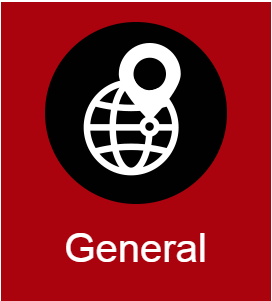
Video tutorials
Build:
Beam , Slider, Belt, Gear, Spring, Sensor, Import/export a mechanism
Graphics:
Create/edit/attach, Import, Export
Input Motion:
Targets: Angle/elongation, Relative angle, X/y position, Various ways of driving a mechanism
Modelling
SAM is equipped with a large library of basic elements, including:
- beam, slider
- belt, gear
- sensor
- spring, damper and friction element (both translational and rotational)
- non-linear spring
which allows the analysis of a huge variety of mechanisms. The unique mathematical foundation of the program offers a large number of features and overcomes many of the problems of traditional mechanism programs. Open loop, closed loop and even multiple loop mechanisms are treated in the same way and even the most complex mechanisms, including planetary gear trains, can be modeled within minutes.
CAD interface
The DXF import/export facility lets you export your conceptual mechanism design to any CAD program to work out the details and it lets you import CAD data to easily set-up the mechanism in SAM or to perform animation of the final mechanism. Imported CAD parts may be used as illustrative parts of the mechanism.
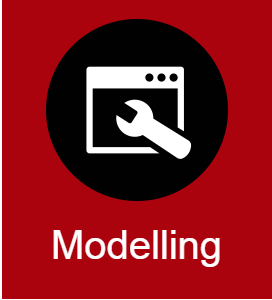
Analysis Results
Keywords
- positions, angles, length
- derivatives
- force and torque
- power
- bearing forces
- path, hodograph
- user expressions
- export
Once the mechanism has been constructed and the inputs have been defined any of the following kinematic quantities can be calculated (all relative or absolute):
- nodal position, displacement, velocity, acceleration
- angles, angular velocity and acceleration
Furthermore SAM can perform force-analysis, thus enabling the calculation of:
- driving torque (force)
- reaction forces in bearings
- internal forces in elements
- required or transmitted power
User defined results (SAM Professional)
A sophisticated formula parser offers the possibility to combine simulation results in multiple ways to
derive user defined results. User defined results may also be displayed as curves in the graph.

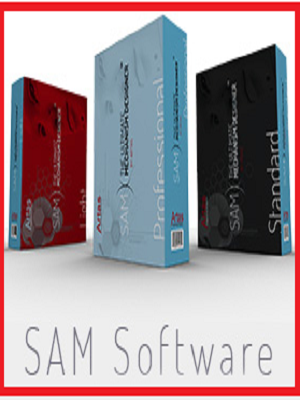
Input Motion
Keywords
- user table
- multiple actuators
- linear actuator
SAM allows the definition of multiple inputs, which can either be defined in terms of absolute displacements or in terms of elemental change of shape to model relative inputs (e.g. elongation of a hydraulic cylinder or relative rotation of a robot elbow). Each of the inputs can be defined independently. Various frequently used input motion laws, such as:
- constant velocity
- polynomial
- cyclical motion
- 2.order velocity profile
- cubic splines
are available and can be combined to form any desired input diagram. Inputs can also be read from an external ASCII file or defined via a table to enable the definition of arbitrary motions. This latter feature is especially handy for the modeling of non-standard cam profiles.
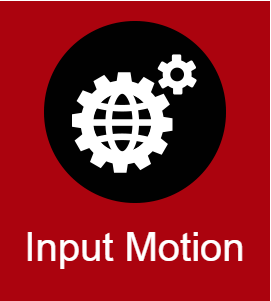
Optimization
Keywords
- all geometry
- single function
- multi parameter
- constrained optimization
- function or path
- mass, stiffness
- position of mass
- peak, RMS, average
The optimization module of SAM Professional offers constrained single-function multi-parameter optimization based on a mix of evolutionary algorithms and Simplex techniques. Constraints are dealt with by treating each
violation of a constraint as a penalty that is added to the original cost function. The software offers the
option to define own results from the standard set of results via an advanced formula parser. This option
is also used to define and add penalties.
Taking the initial design/topology as a starting point one can for example further improve the quality in
which the trajectory of a coupler point equals the target trajectory by changing the geometry of the
mechanism within pre-defined ranges. Or one can minimize the peak or RMS value of the driving torque
of a mechanism by adding a compensating mass and let SAM determine the optimal value of the mass
and its position within the allowable range. Just as in the case of the trajectory optimization one can
also specify a reference function and minimize the difference between the actual and the reference
function. When designing for example fitness equipment one is generally seeking a predefined force as
function of displacement.
The goal for optimization can be the minimization or maximization of a variety of properties (peak, RMS, average, ...) or the difference between the actual and the target behaviour of a mechanism, such as:
- Trajectory of a node (with of without prescribed timing)
- Any motion or force quantity (as function of time or another quantity)
SAM seeks the optimum by modifying the following properties within user-defined ranges:
- geometry of mechanism
- element properties, such mass, spring constant, transmission ratio, ...
The optimization process in SAM is based on a two step approach, consisting of:
- Exploration of the design space
- Optimization of a specific solution
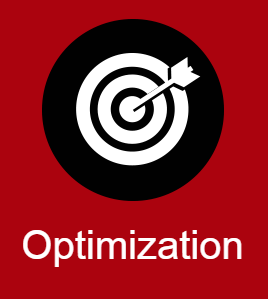

First, the entire parameter space is explored globally using a combination of a pure Monte-Carlo technique and a so-called Evolutionary Algorithm, which is a optimization technique derived from Genetic Optimization. The top list of such a global exploration are shown in the Explore list box, which displays the value of the optimization function and the corresponding parameters. The individual with the best property is listed at the top.
Next, the designer can select one of the results from the Explore window and start a local optimization. This local search can be either based on a Simplex technique or on a Evolutionary Algorithm with a smaller parameter range centered around the selected solution.
The combination of a global exploration strategy and a local optimization strategy - with the designer in the loop for selecting the mechanism that is further optimized - is believed to give the best trade-off between speed and coverage of the design space. Alternatively, options can also be set in such a way, that a fully automated optimization is performed.
Design Wizards
Keywords
- parametric
- 4-bar mechanisms
- exact linear guiding
- approximate linear guiding
- Watt, Evans
- Robberts
- Chebyshev
- Hoecken
SAM offers a set of design wizards which will help you to synthesize mechanisms for specific tasks, such as:
- Angle function generation (a minimum of 3 pairs of input/output angles are to be satisfied).
- 3-Position/angle synthesis of the coupler plane
- Approximated straight line motion
- Exact straigh line motion
In case these design wizards do not provide the solution to the specific design problem, the user has to rely on his experience, previous design, handbooks or trial&error to invent the mechanism, which can then be modelled and analyzed in SAM.

BOOKS
- konstruktivegetriebelehre
- Neil Sclater
- WILEY
- DMAGL
- I. I. Artobolevsky
- SAM REFERENCE
- Mechanism Design: Analysis and Synthesis
- Planetenmischer mit dynamisch getriebenen Mischarmen
BOOKS
- konstruktivegetriebelehre
- Neil Sclater
- WILEY
- DMAGL
- I. I. Artobolevsky
- SAM REFERENCE
- Mechanism Design: Analysis and Synthesis
- Planetenmischer mit dynamisch getriebenen Mischarmen
BOOKS
- konstruktivegetriebelehre
- Neil Sclater
- WILEY
- DMAGL
- I. I. Artobolevsky
- SAM REFERENCE
- Mechanism Design: Analysis and Synthesis
- Planetenmischer mit dynamisch getriebenen Mischarmen
BOOKS
- konstruktivegetriebelehre
- Neil Sclater
- WILEY
- DMAGL
- I. I. Artobolevsky
- SAM REFERENCE
- Mechanism Design: Analysis and Synthesis
- Planetenmischer mit dynamisch getriebenen Mischarmen
MACHINE ELEMENTS AND ANALYSIS CAE
APM Multiphysics
APM Multiphysics allows you to simulate a series of physical processes - heat transfer, electromagnetic field, for liquid and gas, as well as to design mechanical equipment and its elements (details of general purpose machines) using engineering techniques to perform designing and verifying calculations connected nodes, to analyze the stress-strain state, as well as analysis of the stability and natural frequencies (using FEM), three-dimensional objects of any complexity for arbitrary securing, static or dynamic loading, create documentation in accordance with ESKD, used in the design of a database of standard products and materials.
APM WinMachine
WinMachine the APM - the CAE computer-aided calculation and design of mechanical equipment and structures in the field of engineering, designed to meet the latest advances in computational mathematics, the field of numerical methods and programming, as well as theoretical and experimental engineering solutions. This system is fully adapted to the requirements of state standards and regulations relating to the registration of a design documentation, as well as to the calculation algorithms.
APM StructFEM
APM StructFEM allows the analysis of stress-strain state (using FEM) of three-dimensional objects of any complexity for arbitrary securing, static or dynamic loading of 64-bit operating systems without formal restrictions degrees of freedom to carry out the calculation of sustainability and natural frequencies, and thermal analysis , perform calculations of welded, bolted, riveted joints, create documentation in accordance with ESKD, used in the design of a database of standard products and materials.
APM MECHANIC
APM Mechanic allows you to design machine parts and mechanisms using engineering techniques (mechanical rotation transmission shafts and axles, bearings and friction, elastic elements of machines, transfer of translational motion, cams), as well as to designing and verifying calculations connected nodes (bolt, rivet , welded), bodies of rotation of the compounds (interference fit, keyway, other ...); after settlements possible to create documentation in accordance ESKD and using databases of standard products and materials..
APM FEM
The system of the strength finite element analysis APM FEM for KOMPAS-3D is designed to perform rapid calculations of solid objects in the environment of KOMPAS-3D , and then visualize the results. The composition ofAPM FEM includes tools of preparation of parts and assemblies to the calculation, the boundary conditions and loads, as well as built-in generator of finite element mesh and postprocessor. This feature set allows you to simulate a solid object and complex computational model to analyze the behavior under different treatments in terms of statics, eigen frequencies, stability and thermal loading.
APM EMA
APM ElectroMagnetic Analysis allows you to model and perform various kinds of analysis of electromagnetic field characteristics for electrical equipment and communications equipment. Calculations are performed for the steady and unsteady regimes. The functionality of the system APM EMA to address the equations of electrodynamics systems include a wide range of tools for the preparation of models, which are the subject of analysis. The main types of calculations are: electrostatic calculation, the calculation of the field of direct currents, magnetostatic calculation, electromagnetic transient calculation, the high-frequency modal analysis.
APM FGA
APM FGA allows finite element analysis of flows of liquids and gases to produce spatial kinematic, dynamic and energy characteristics, comprehensively describing their behavior with different boundary conditions and physical properties.
APM ECA
APM Electrical Circuit Analysis allows you to simulate circuits of arbitrary topology, consisting of different types of two-poles: passive - resistor, capacitor, inductor; active - DC power, DC power, AC power (harmonic) current, the AC (harmonic) voltage. For the calculation, use the following types of analysis: static, harmonic analysis, transient analysis. Calculations are performed for the stationary, steady-state harmonic and transient regimes.
APM Civil Engineering
MULTIBODY DYNAMICS CAE
Universal Mechanism consists of different modules and tools and may be delivered in the different configurations. The minimal, so called "base configuration" (UM Base), is a ready tool which allows carrying out dynamic analysis of mechanical systems. Functionality of the base configuration can be widened with the help of additional modules.
| UM Automotive | UM Loco | UM Train | UM Tracked Vehicle | UM FEM | UM CAD Interfaces |
| UM Experiments | UM Control | UM Subsystems | UM Durability | UM Ballast | UM 3D Contact |
UM Automotive includes mathematical models of tires, program tools for description of road plan and road excitations. UM Automotive includes as well set of typical maneuvers, suspensions, steering systems and elements of trasmission. Module gives user the possibility to estimate dynamical behavior of the vehicle, including forces in the suspension force elements, safety and "road holding" factors, etc...
The program package includes module UM Loco intended for simulation of railway vehicle dynamics in both straight and curve railroad tracks. The simulation is performed in time domain by means of numeric integration of differential or differential-algebraic equations of motion. UM Loco allows the user to create fully parameterized models of vehicles...
UM Train module automates the process of train model creation and the analysis of obtained results. The module allows computing the longitudinal dynamics of train in braking, traction and idling modes on a railway track of any configuration...
The UM Tracked Vehicle module of UM software has been developed for an automatic generation of models of tracked vehicles and analysis of their dynamics...
This module let the user a possibility to introduce into a mechanical system deformable bodies undergo large reference displacement but small deformation. Such an approach makes more exact results in comparison with multibody simulation and could be very useful in some cases. This approach could be useful for research of vibration of car body and carriage underframe during the motion of railway vehicle subject to influence from railway track irregularities and a power generating set..
Modern approach to design of machines and mechanisms assumes creating 3D models with the help of one of the computer-aided design (CAD) software with parallel strength and dynamics analysis. To simplify importing such models from CAD software to Universal Mechanism we developed tools for direct data import from CAD software to Universal Mechanism. Such import tools are collected within the UM CAD Interfaces module. The current UM version supports data import from Autodesk Inventor, SolidWorks, Unigraphics NX, KOMPAS and Pro/ENGINEER...
It is often required in engineering practice to carry out series of numerical experiments, for example to analyze dynamical behavior and sensitivity of mechanical system or to find out optimal parameters of the system. UM Experiments gives a user a possibility to run series of numerical experiments automatically...
Universal Mechanism includes UM Control module, which provides interface between Universal Mechanism and Matlab/Simulink. The user can compile his/her own Matlab/Simulink model and attach it into the Universal Mechanism. Matlab/Simulink interface gives the user a possibility to include unlimited number of Matlab/Simulink libraries and interactively turn on/off interfaces...
Subsystem technique is a basis of modeling objects with large number of degrees of freedom and creation of database of typical design elements for modeling technical systems. By using this method an object is represented as a tree of subsystems, which are linked by means of force elements and constraints. Any object previously created by the user can be a subsystem. This object may contain any tree of subsystems...
The fatigue analysis starts with the dynamical hybrid model in Universal Mechanism. The flexibility characteristics of the structural parts are incorporated into UM model using a modal formulation based upon component mode synthesis. Basically, this method represents the part,s flexibility using a modal basis, which is optimized to account for constraint and force locations. The mode shape displacements and stresses are calculated using the finite element software. The UM Durability module combines the stress time history information generated during series of numerical experiments in UM and the material fatigue strength characteristics to generate the predicted life distribution in the part...
This module allows including in a UM model a planar granular media, which is a set of particles (rigid polygons and circles). The particles interact with each other by contact forces. Simple models of contact forces are used in the module. Each force consists of two components. The first component is a linear viscoelastic normal force. Another one is a dry friction force with two modes: sliding and sticking...
This module allows simulating of contact interaction of bodies by contact manifolds (graphical objects). The realized contact algorithm is based on the simulation of interaction of arbitrary convex polyhedrons. The set of supplied primitives includes the following types: box, cylinder, cone, ellipsoid, and polyhedron
MATHEMATICAL TECHNOLOGY
THE PROGRAM IS CAREER APPLICATION IN MULTIPLE AREA TO PG & RESEARCH PROFESSIONAL
PROJECT AND RESEARCH REFERENCE
- ON COUNSELLING PRODUCT AND PROCESS AREA WILL BE IDENTIFIED
- OUTPUT DATA WILL BE TAKEN AS REFERENCE ON SYLLABUS TO ARRIVE ACADEMIC INPUT
- SYLLABUS WILL BE TAKEN ON STREAM OF PRODUCT DEVELOPMENT & REVERSE ENGINEERING
- DATA FROM SYLLABUS TO ESTABLISH PROTOTYPE - ANALYSING VIA SOFT TOOLS »» OPTIMIZATION.
PRODUCT AREA - MECHANICAL & APPLICATION - » MECHANISM » MACHINE ELEMENTS » STRUCTURAL ANALYSIS » MULTIBODY DYNAMICS » »




